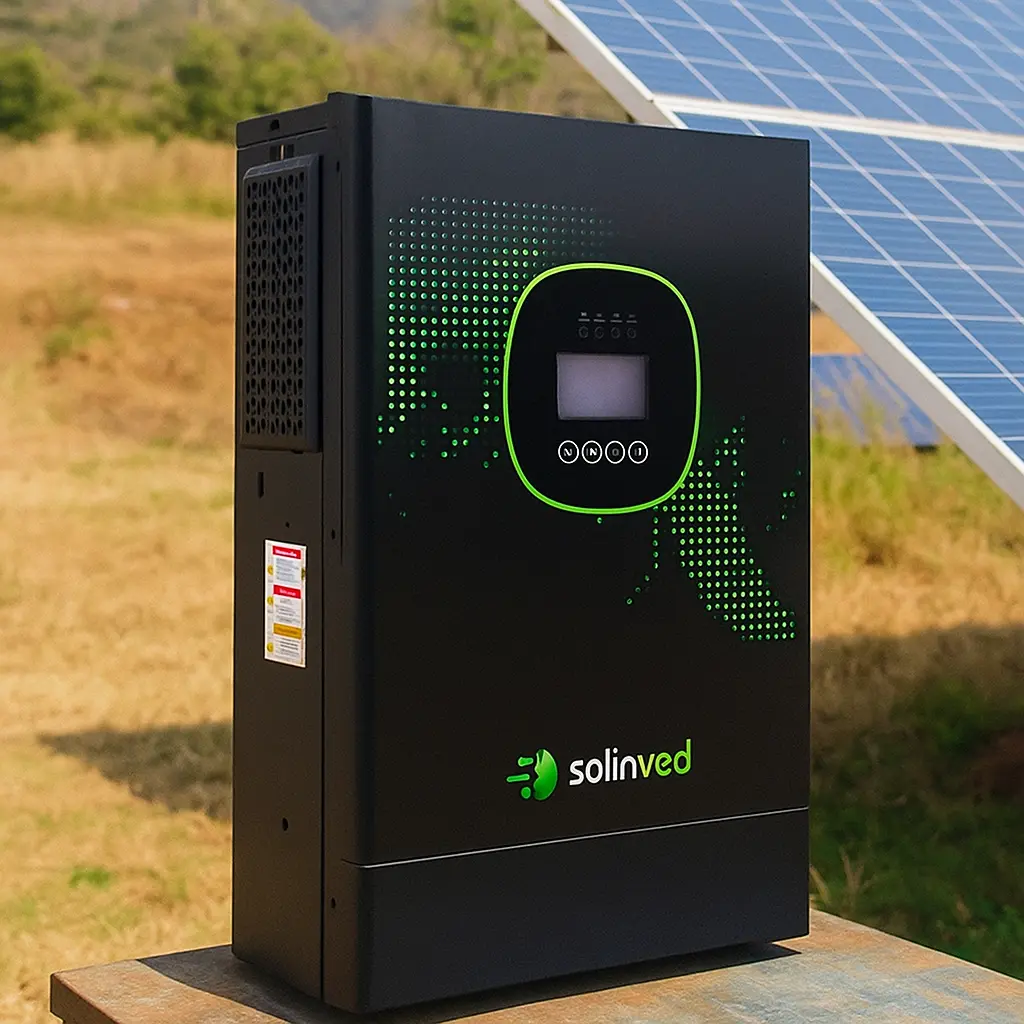


Inverters, at the heart of solar energy systems, convert DC energy into AC energy, enabling energy use in homes, businesses, and some agricultural applications. However, inverters can have different features; the two most common types are standard inverters and smart inverters.
In this article, we will examine in detail the differences between smart and standard inverters, their advantages, and how you can increase energy efficiency with Solinved solutions.
Standard or standard inverters essentially convert DC energy from solar panels into AC energy.
Features:
Provides basic energy conversion
Limited monitoring of system performance and energy production
Generally suitable for small and medium-sized systems
More cost-effective
Disadvantages:
Efficiency loss may occur due to shading or panel failure
No remote monitoring or energy optimization
Limited energy storage integration
Smart inverters offer all the functions of standard inverters, along with additional features and intelligent energy management.
Features:
DC to AC energy conversion
Optimizes panel efficiency with MPPT (Maximum Power Point Tracking)
Provides remote monitoring and control
Can be integrated with energy storage systems and batteries
Monitors system performance in real time and provides energy savings
Advantages:
Maximum energy production efficiency
Uninterrupted use with energy storage
Smart warnings and error detection
User-friendly monitoring and control
Long-lasting and durable design
| Features | Standard Inverters | Smart Inverters |
|---|---|---|
| Energy Conversion | DC → AC | DC → AC + optimization |
| Energy Efficiency | Basic efficiency | High efficiency with MPPT and smart optimization |
| Energy Storage | Limited or none | Integrated with batteries and storage systems |
| Remote Monitoring | None | Mobile or Real-time web monitoring |
| Performance Monitoring | Limited to panel-based | Detailed monitoring by panel and system |
| Fault Detection | Simple alerts only | Detailed alerts, automatic detection, and reporting |
| Area of Use | Small and medium-sized systems | Residential, commercial, industrial, and agricultural applications |
Small Home Systems: Regular inverters are cost-effective and meet energy needs.
Shading and Complex Roof Areas: Smart inverters prevent efficiency loss with panel-based optimization.
Need for Energy Storage and Smart Management: Smart inverters integrate with batteries to provide uninterrupted power.
Commercial or Industrial Systems: Smart inverters stand out with their high performance and remote monitoring advantages.
Agricultural Irrigation (Optional): Smart inverters can integrate with energy-efficient irrigation systems, reducing costs.
High Efficiency: MPPT technology ensures maximum solar panel output.
Remote Monitoring: Monitors system performance in real time via mobile app and web interface.
Energy Storage Integration: Works seamlessly with lithium batteries and energy storage systems.
Long Life and Durability: Designed to withstand high temperatures and harsh climates.
User-Friendly: Easy installation and minimal maintenance.
1. Why are smart inverters more efficient?
MPPT and energy optimization technology produce maximum energy from the panel and minimize losses.
2. What are the disadvantages of using a standard inverter?
Features such as shading, battery integration, and remote monitoring are limited, and energy loss may occur.
3. Which systems are smart inverters compatible with?
They are compatible with many applications, including residential, commercial, industrial systems, and agricultural irrigation.
4. Do they require maintenance?
Both types of inverters require minimal maintenance, but smart inverters simplify maintenance with performance optimization and fault detection.
5. Does using a smart inverter reduce energy costs?
Yes, maximum efficiency and energy management reduce system energy costs.